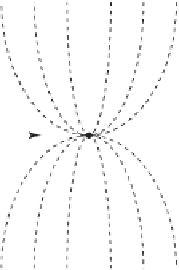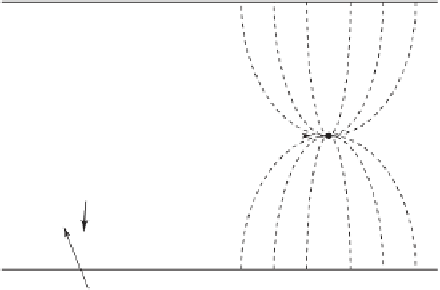Environmental Engineering Reference
In-Depth Information
In the United States, power plants built between 1970 and 1978 had to meet a standard for PM
emissions of a maximum of 0.03 lb per million Btu heat input (0.013 kg/GJ). For power plants built
after 1978, there is no numerical standard, but the so-called Best Available Control Technology
(BACT) standard applies (see Section 9.2.1). Presently, BACT for power plants is an electrostatic
precipitator.
Electrostatic Precipitator.
The ESP was invented in the early 1900s by F. G. Cottrell at the
University of California, Berkeley, in order to collect acid mist in sulfuric acid manufacturing
plants. It was soon applied for collecting dust in cement kilns, lead smelters, tar, paper and pulp
mills, and other factories. Beginning in the 1930s and 1940s, ESP was applied to coal-fired power
plants. The installation of early ESPs preceded environmental regulations; they were installed to
protect the owners from possible liability suits because the particle emissions could cause a health
hazard.
The ESP works on the principle of charging particles negatively by a corona discharge and
attracting the charged particles to a grounded plate. A schematic of an ESP is given in Figure 5.6.
Several charging wires are suspended between two parallel plates. A high negative voltage, on the
order of 20 to 100 kV, is applied to the wires. This causes an electric field to be established between
the wires and the plates along which electrons travel from the wires toward the plates. This is called
a
corona discharge
. The electrons collide with gas molecules, primarily with oxygen, creating
negative ions. The molecular ions keep traveling along the field lines, colliding with particles and
transferring the negative charge to the particles. Now, the particles migrate to the plates where their
charge is neutralized. The neutral particles are shaken off the plates by rapping them periodically.
The particles fall into a hopper from whence there are carted away.
The collection efficiency of an ESP depends on many factors, primarily the particle diameter
(the smaller the diameter, the less the efficiency), the plate area, the volumetric flow rate of the flue
gas passing between the plates, and the particle migration speed toward the plates, The efficiency
Plate electrode
Plate electrodes
Gas flow
Q
Wire electrode
w
Electric field
Wire electrode
Side view
Top view
Figure 5.6
Electrostatic precipitator, schematic.








